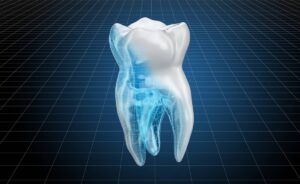Gum Graft Surgery Can Change Your Life
Gum graft surgery is a dental procedure that involves taking gum tissue from one area of the mouth and placing it in another area to cover exposed tooth roots or to thicken existing gum tissue. This procedure is commonly performed to prevent tooth sensitivity, improve the appearance of the smile, and protect against gum disease.
Dental implant surgeons often recommend gum grafting as a preparatory procedure for dental implant surgery. This is because the success of dental implants depends on the availability of healthy gum tissue to support the implant. If a patient lacks adequate gum tissue, a gum graft surgery may be necessary before dental implant surgery can be performed.
Treating Gum Recession with Gum Graft Surgery
Dental gum graft surgery is also used to treat gum recession, a condition in which the gum tissue pulls away from the tooth, exposing the tooth root. Gum recession can be caused by a variety of factors, including gum disease, aggressive brushing, and hormonal changes. If left untreated, gum recession can lead to tooth decay, bone loss, and tooth loss.
During a gum graft surgery, the dentist or periodontist will first numb the area with a local anesthetic. They will then make a small incision in the gum tissue at the recipient site, where the gum tissue is thin or missing. They will then gently pull the gum tissue from the donor site, typically the roof of the mouth, and place it over the recipient site. The tissue is then secured in place with sutures or adhesive.
The Gum Graft Surgery Procedure: What to Expect
After the surgery, patients will be given detailed post-operative instructions, including how to care for the surgical site, what foods to avoid, and how to manage any discomfort. Most patients can return to their normal activities within a few days, although it may take several weeks for the gum tissue to fully heal.
Gum grafting is a safe and effective procedure with a high success rate. While there may be some discomfort during the healing process, the benefits of the procedure, including improved gum health and a more attractive smile, far outweigh any temporary discomfort.
If you are considering dental implant surgery, it is important to speak with your dental implant surgeon about whether a gum graft surgery may be necessary beforehand. By addressing any gum tissue deficiencies prior to dental implant surgery, you can improve the chances of a successful outcome and reduce the risk of complications.
In addition to dental implant surgery, gum grafting may also be recommended for other dental procedures, such as crown lengthening or cosmetic gum contouring. By working with a skilled and experienced dental implant surgeon or periodontist, you can ensure that you receive the best possible care for your oral health needs.
Gum Graft Surgery and Dental Procedures: Crown Lengthening and Cosmetic Gum Contouring
Gum graft surgery is a common dental procedure used to treat gum recession, prepare for dental implant surgery, and improve the appearance of the smile. In addition to these purposes, gum grafting may also be recommended for other dental procedures, such as crown lengthening and cosmetic gum contouring.
Crown lengthening is a dental procedure that involves removing gum tissue to expose more of the tooth’s surface. This procedure is typically done to prepare a tooth for a dental crown or filling. Crown lengthening may also be done for cosmetic purposes, to make the teeth appear longer and more proportional. In some cases, gum tissue may need to be added back to the tooth after the crown lengthening procedure, and this is where gum graft surgery comes in.
Cosmetic gum contouring, on the other hand, involves reshaping the gum tissue to improve the appearance of the smile. This may be done to correct a “gummy” smile, in which the gums are too prominent and cover too much of the teeth. Cosmetic gum contouring may also be done to create a more even gum line or to correct gum asymmetry.
In both crown lengthening and cosmetic gum contouring gum graft surgery may be recommended to restore gum tissue that has been removed during the procedure. Gum tissue may be taken from another area of the mouth and transplanted to the area where it is needed. This can help to improve the appearance of the smile and protect against gum disease.
In summary, gum graft surgery is a common dental procedure used to treat gum recession, prepare for dental implant surgery, and improve the appearance of the smile. Dental implant surgeons and periodontists recommend this procedure to patients who have gum tissue deficiencies that could compromise the success of dental implant surgery or lead to gum disease. By choosing a skilled and experienced dental implant surgeon or periodontist, you can ensure that you receive the best possible care for your oral health needs.


